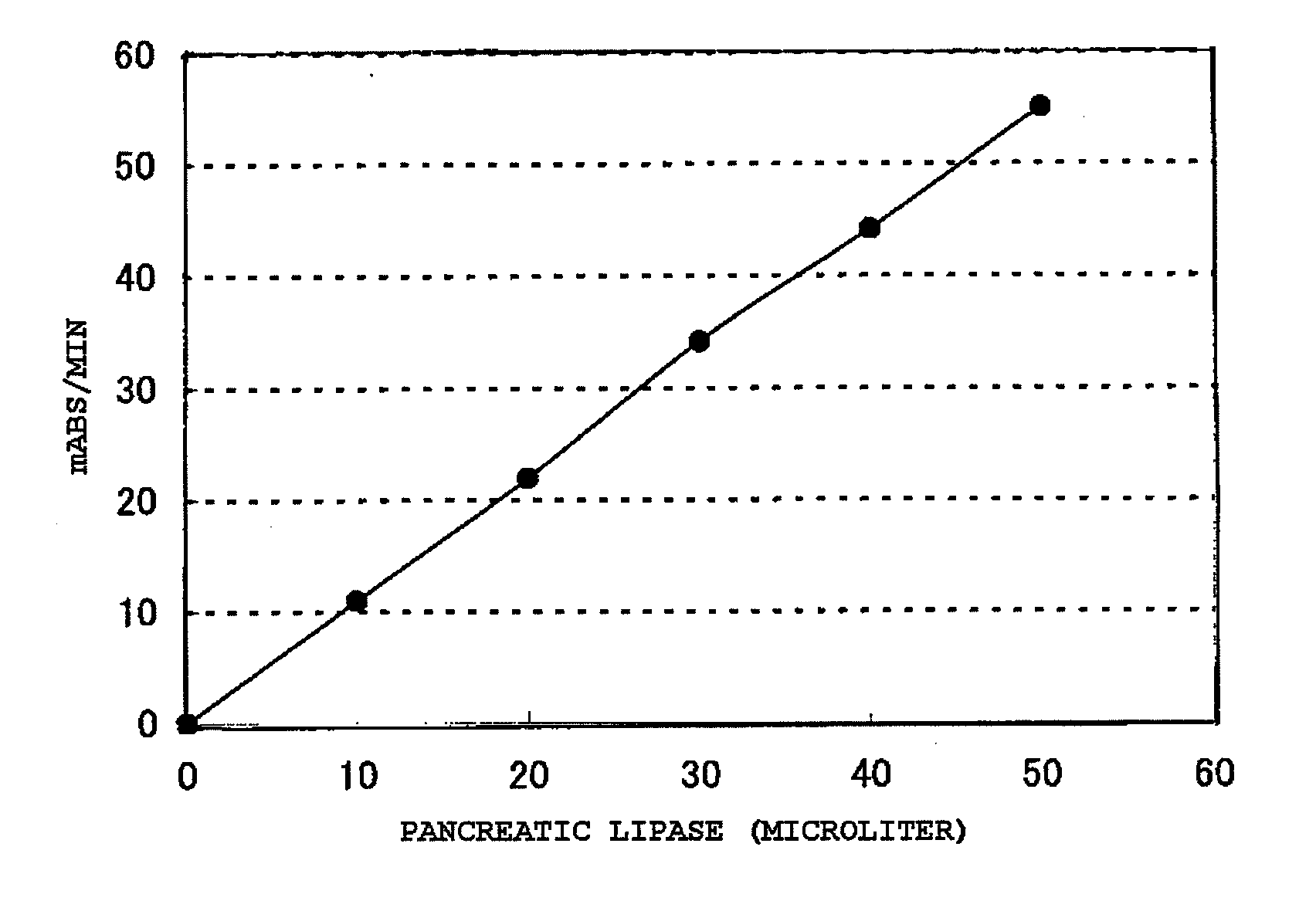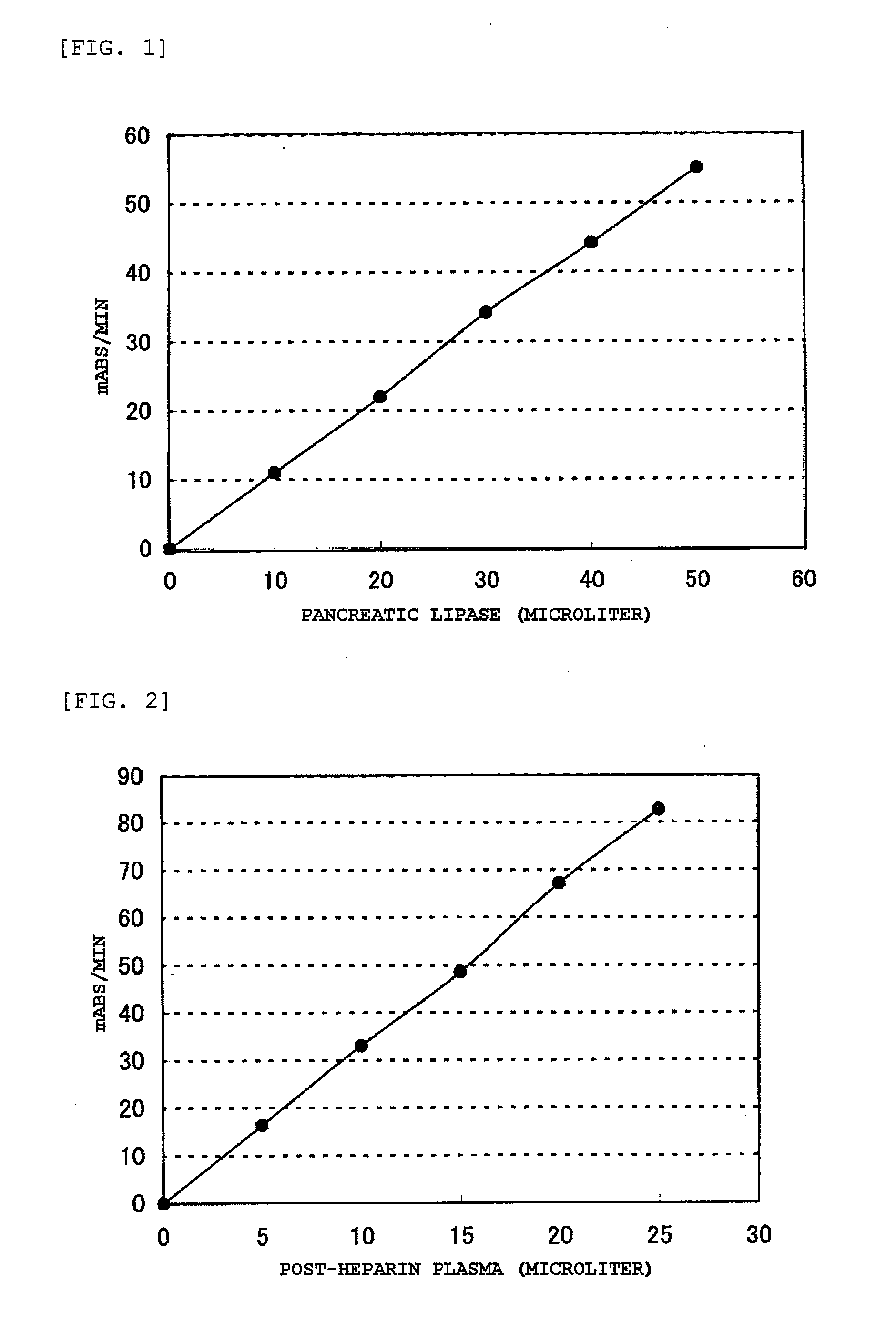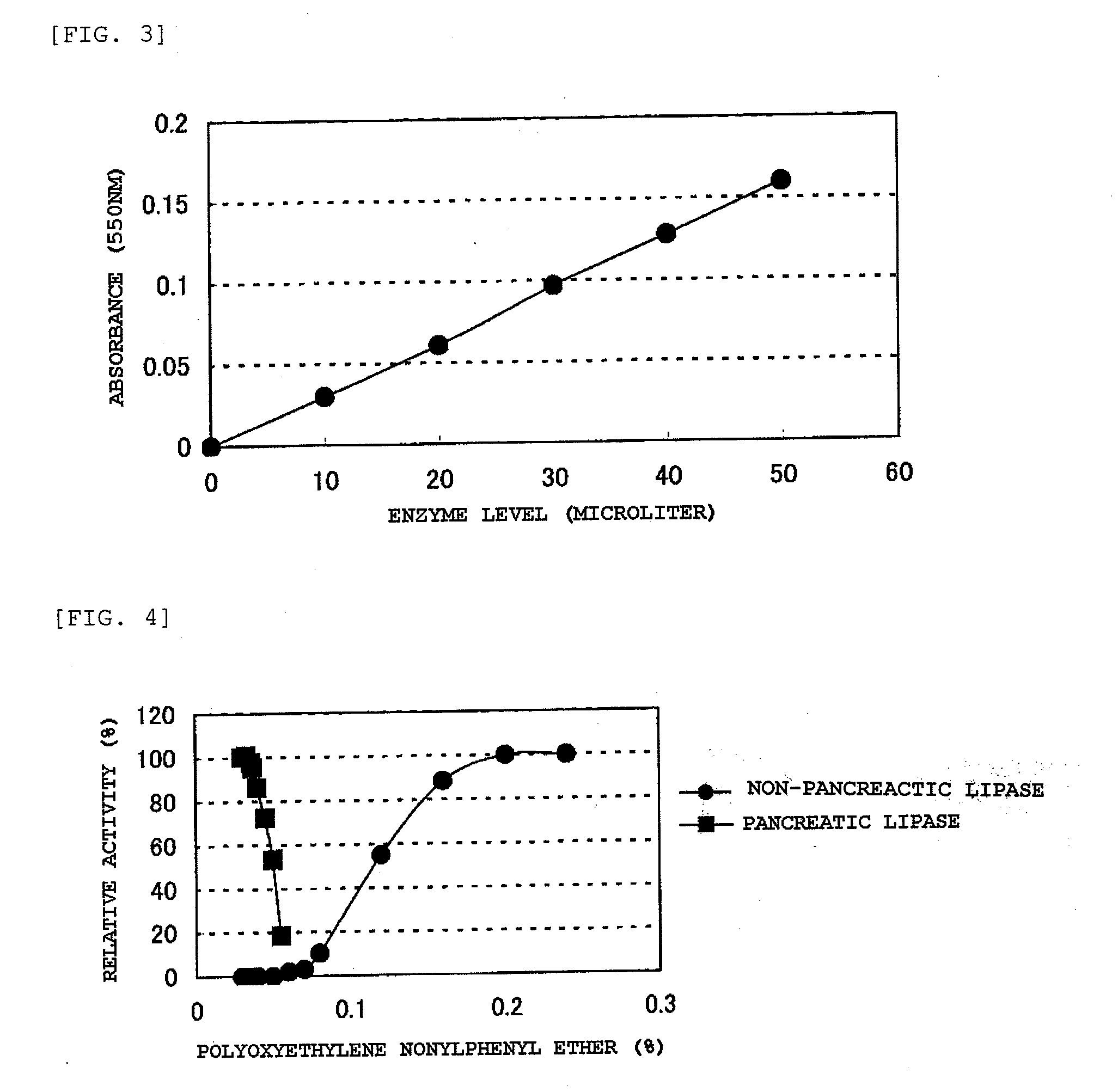Composition for Lipase Activity Determination and Method of Determing Activity
a lipase activity and spectrophotometric technology, applied in the field of composition for lipase activity determination and determing activity, can solve the problems of difficult to determine the lipase activity with good reproducibility, low activity, and inability to use coupling enzymes to determine the lipase activity spectrophotometrically, etc., to achieve excellent reproducibility and accuracy, excellent long-term storage stability, and convenient use
- Summary
- Abstract
- Description
- Claims
- Application Information
AI Technical Summary
Benefits of technology
Problems solved by technology
Method used
Image
Examples
example 1-1
Preparation of Lipase Substrate Diglyceride
[0156] One point five gram of phosphatidylcholine derived from egg yolk lecithin (manufactured by Asahi Kasei Pharma Corporation) was dissolved in 10 ml of chloroform. Five milliliters of a 0.5 M PIPES-NaOH buffer (pH 7.5) in which 400 units of phospholipase C (manufactured by Asahi Kasei Pharma Corporation) had been dissolved was added thereto, and the mixture was stirred at 37° C. to perform a hydrolytic reaction. Two hours later, the solvent layer and aqueous layer were separated to collect the chloroform layer, and the layer was passed through a silica gel column (3 ml) that had been previously suspended in chloroform, followed by development with chloroform, to thereby yield a diglyceride fraction. Chloroform was completely distilled off using a rotary evaporator, to thereby yield 1.1 g of a diglyceride in an oil form.
example 1-2
Preparation of a Composition for Pancreatic Lipase Activity Determination in Reaction Formula 2 Above
(1) Preparation of Reagent 1 (R1)
[0157] There was prepared a reagent including 200 mM Bicine-NaOH (pH 8.0), 2 mM calcium chloride, 2 mM magnesium sulfate, 20 mM ammonium chloride, 3 mM adenosine triphosphate, 30 mM glucose, 3 mM NADP, 1,125 U / L monoglyceride lipase (manufactured by Asahi Kasei Pharma Corporation), 600 U / L glycerol kinase (manufactured by Asahi Kasei Pharma Corporation), 600 U / L glucose-6-phosphate dehydrogenase (manufactured by Toyobo Co., Ltd.), 900 U / L ADP-HK (manufactured by Asahi Kasei Pharma Corporation), and 15,000 U / L colipase (manufactured by Asahi Kasei Pharma Corporation).
(2) Preparation of Reagent 2 (R2)
[0158] A certain amount of the diglyceride yielded in Example 1-1 was weighed, and a certain amount of 0.04% POE nonylphenyl ether (1.5 mM MES-NaOH buffer, pH 5.5) was added to give 0.4 mM, followed by stirring at 37° C. for 30 minutes, to thereby yie...
example 1-3
Preparation of a Composition for Non-Pancreatic Lipase Activity Determination in Reaction Formula 3 Above
(1) Preparation of Reagent 1 (R1)
[0159] There was prepared a reagent including 300 mM Tris-HCl buffer (pH 8.5), 2 mM calcium chloride, 3 mM magnesium sulfate, 3 mM adenosinetriphosphate, 1,125 U / L monoglyceride lipase (manufactured by Asahi Kasei Pharma Corporation), 600 U / L glycerol kinase (manufactured by Asahi Kasei Pharma Corporation), 30,000 U / L glycerol-3-phosphate oxidase (manufactured by Asahi Kasei Pharma Corporation), 5,000 U / L peroxidase (manufactured by Sigma), and 0.2% TOOS.
(2) Preparation of Reagent 2
[0160] There was prepared a reagent including a diglyceride substrate solution prepared by the method described in Example 1-2 (diglyceride concentration: 1.5 mM, POE-nonylphenyl ether concentration: 0.3%), 1 mM Bicine-NaOH (pH 8.0), and 0.2% 4-aminoantipyrine.
PUM
| Property | Measurement | Unit |
|---|---|---|
| absorbance at a wavelength | aaaaa | aaaaa |
| wavelength | aaaaa | aaaaa |
| a wavelength | aaaaa | aaaaa |
Abstract
Description
Claims
Application Information
 Login to View More
Login to View More - R&D
- Intellectual Property
- Life Sciences
- Materials
- Tech Scout
- Unparalleled Data Quality
- Higher Quality Content
- 60% Fewer Hallucinations
Browse by: Latest US Patents, China's latest patents, Technical Efficacy Thesaurus, Application Domain, Technology Topic, Popular Technical Reports.
© 2025 PatSnap. All rights reserved.Legal|Privacy policy|Modern Slavery Act Transparency Statement|Sitemap|About US| Contact US: help@patsnap.com



